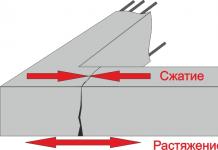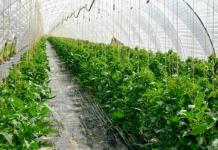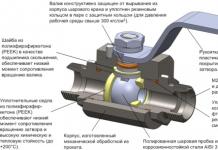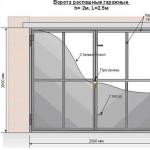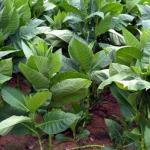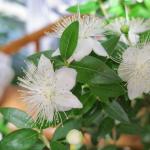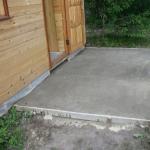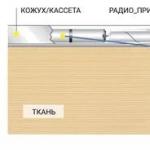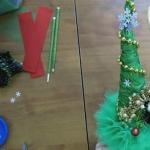Screen printing consists in forcing ink onto the printed material through a stencil applied to the mesh. This is a very common printing method, characterized by high quality image transfer to any material, including those inaccessible to all other types of printing, saturation, large thickness and stability of the ink layer, low productivity, a large number of applications, including not only printing, but even electronics. .
Screen printing technology
A frame with a metal or polymer mesh stretched over it acts as a printing plate. The number of threads in the mesh depends on the characteristics of the work being performed and on the method of applying a stencil to it, on average it is 50-150 threads per cm. The thickness of the paint layer depends on the thickness of the threads and the distance between them. At the origin of this method, silk stretched over a wooden frame was used as a mesh, which is why screen printing is also called silk-screen printing.
The image can be formed on the grid in a direct and indirect way.
- The direct method consists in applying a copying solution (colloidal polymer solution) to the grid. The solution is then dried to form a photosensitive soluble copy layer. An image is exposed on it, while the blank areas harden, and the printing ones are subsequently washed out with water.
- An indirect method consists in applying an image to a special film material with a copy layer. A copy of the image is being processed, whitespace elements are solidified. Then the copy is rolled to the grid.
- The combined method is a combination of the two above. The image is applied to the grid, previously connected with the copying material and copying solution. This allows you to create more durable forms and achieve high definition printing.
Printing occurs as follows: the printing form is placed on the form holder. The material to be sealed is installed in a horizontal position, its immobility is ensured by stops and vacuum. The paint is fed onto the mold, then with the movement of the squeegee it is pressed into the mesh, while the squeegee pushes through the mesh and simultaneously cuts off the remaining paint. Then the form is removed, and the printed material is removed to dry.
The production of printing products in the stencil method is carried out both manually and by means of special printing machines.
Areas of application of the screen printing method

A variety of surfaces are printed using the silk screen printing method: paper, fabric, plastic, glass, metal. In addition, the stencil method allows you to print uneven surfaces. All this leads to the use of screen printing in various industries.
Due to the high quality of image transfer and low cost when printing small runs, silk screen printing is used in the production of representative printing products: printing business cards, postcards, folders, invitations, creating booklets with a circulation of 50 copies. and others. In addition, screen printing allows the use of inks that are difficult to use for digital printing, such as metallized (gold, silver). On large runs, printing in gold and silver, as well as other colors from the Pantone palette, is carried out in an offset way, and small runs can be printed with silk-screen printing.
The screen printing plate is a ready-to-print template consisting of a frame, sieve fabric and a copy layer. The correct manufacture of the stencil plate is the main condition for maximum productivity, high quality and cost-effective screen printing. Regardless of the technology, the main task of printing is to transfer the image to the material with a perfect reproduction of the original.
must meet the following requirements:- ensuring maximum fidelity in image reproduction
- Can be used for large print runs
- resistance to printing inks and reagents
- simple mold making technology
- the possibility of regeneration when re-applying the mesh
Printing plates are divided into two groups: printing plates made manually, and printing plates made photomechanical way.
Screen printing forms, made by hand, are rarely used, since their visual capabilities are limited. Photomechanical printing plates are made direct, indirect And combined way.
Originals and photoforms
When designing originals for subsequent screen printing reproduction, unique artistic characteristics must be taken into account:
- high brightness and saturation of prints due to the large thickness of the ink layer
- the presence of image details in high colors and deep shadows
As photoforms in screen printing, a transparencies are used, which have a direct image in relation to the original. For the manufacture of transparencies, high-contrast photosensitive films are used.
 For reproduction in tones and semitones, raster transparencies should be used, not forgetting the limiting effect of the base grid on the reproduced image. On the one hand, the base grid limits the lineature of the reproduced image, on the other hand, the regular structure of the sieve fabric in combination with the regular structure of the raster image can cause moire, that is, overflow of color shades. Therefore, in practice, the following recommendations should be followed:
For reproduction in tones and semitones, raster transparencies should be used, not forgetting the limiting effect of the base grid on the reproduced image. On the one hand, the base grid limits the lineature of the reproduced image, on the other hand, the regular structure of the sieve fabric in combination with the regular structure of the raster image can cause moire, that is, overflow of color shades. Therefore, in practice, the following recommendations should be followed:
- the lineature of the reproduced image in relation to the number of threads on the sieve cloth should be in the range from 1:4 to 1:6
- to reduce or eliminate the emerging moiré, it is necessary to apply the appropriate raster rotation angles
Surface preparation of the grid in the manufacture of a printing plate
 In the manufacture of screen printing forms, the preparation of the surface of the sieve fabric, which is contaminated at the preparatory stage, is of great importance. Even a small amount of grease or dirt will cause a plate defect. Therefore, degreasing and cleaning of the mesh surface should be carried out immediately before applying the copy layer. For degreasing sieve fabrics, a 10-20% alkaline solution or caustic soda can be used. After degreasing, the grid is washed with water and neutralized with a 5% solution of acetic acid, and then again thoroughly washed with water.
In the manufacture of screen printing forms, the preparation of the surface of the sieve fabric, which is contaminated at the preparatory stage, is of great importance. Even a small amount of grease or dirt will cause a plate defect. Therefore, degreasing and cleaning of the mesh surface should be carried out immediately before applying the copy layer. For degreasing sieve fabrics, a 10-20% alkaline solution or caustic soda can be used. After degreasing, the grid is washed with water and neutralized with a 5% solution of acetic acid, and then again thoroughly washed with water.
Direct printing method
 The copying solution is applied to the grid-base, previously stretched on the form frame, dried, the image is exposed from the transparencies, while the gaps are hardened, and then the printing elements of the image are washed out with water. Copy solutions are colloidal solutions of various polymers, and sometimes fine dispersions of solids in a liquid. The physical and chemical properties of copy solutions, the methods of their application and subsequent processing have a significant impact on the technological capabilities and quality of screen printing forms.
The copying solution is applied to the grid-base, previously stretched on the form frame, dried, the image is exposed from the transparencies, while the gaps are hardened, and then the printing elements of the image are washed out with water. Copy solutions are colloidal solutions of various polymers, and sometimes fine dispersions of solids in a liquid. The physical and chemical properties of copy solutions, the methods of their application and subsequent processing have a significant impact on the technological capabilities and quality of screen printing forms.
After application and drying of the copying solution on the grid, a copying layer is formed, which has the following properties: photosensitivity, tanning ability, solubility, thickness.
The maximum light sensitivity of the copy layer cannot be obtained until the copy layer is completely dry. Copy layers are hygroscopic, they are able to absorb moisture from the surrounding air. Therefore, in the room where the printing plate is made, it is necessary to maintain constant climatic conditions, and after being in the drying cabinet, the copy layer must be subjected to aging for some time in the workshop room.
The ability of the copy layer to harden depends on the composition of the copy layer and the exposure time. It should be noted that the quality of screen printing plates depends on the degree of hardening.
The ability of the copy layers to absorb moisture and their solubility depend on the degree of tanning obtained during exposure. The main cause of swelling of the copy layer during copy processing is insufficient exposure. Under the influence of moisture, an insufficiently tanned copy layer increases volume. Therefore, to obtain good quality and stability of stencil forms, the copy layer must be tanned to its full thickness.
The ability of unexposed and untanned areas of the copy layer to dissolve depends on its structure (particle size), thickness and the influence of reflected and scattered rays during exposure.
The thickness of the copy layer depends on three factors: the thickness of the mesh, the viscosity of the copy solution, and the method of its application. The thickness of the copy layer has a great influence on the ability to reproduce image details. Naturally, the thicker the copy layer, the longer the exposure time should be.
 The washout time of the printing elements of a thin copy layer is less. However, when applying a thin layer, the copying solution, when dried, remains only in the cells of the stencil grid. The hollow spaces between the threads do not provide full contact of the form with the printed surface. Printing ink enters these spaces and severely distorts the edge of the image outline.
The washout time of the printing elements of a thin copy layer is less. However, when applying a thin layer, the copying solution, when dried, remains only in the cells of the stencil grid. The hollow spaces between the threads do not provide full contact of the form with the printed surface. Printing ink enters these spaces and severely distorts the edge of the image outline.
 A thick copy layer provides more complete contact of the screen form with the printed surface, which, ultimately, less distorts the edges of the contours of images when printed. Unlike a thin copy layer, a thick copy layer gives a better formation of the edge of the printing element and allows even relief images to be obtained on the print.
A thick copy layer provides more complete contact of the screen form with the printed surface, which, ultimately, less distorts the edges of the contours of images when printed. Unlike a thin copy layer, a thick copy layer gives a better formation of the edge of the printing element and allows even relief images to be obtained on the print.
The factors that determine the exposure time required for the complete hardening of the copy layer are: the photosensitivity and spectral sensitivity of the copy layer, its thickness, the spectral composition of the radiation of the light source, the power of the light source, the distance from the light source to the glass of the copy frame, the nature of the transparencies (photoforms) .
Indirect way of making printing plates
The image from the transparencies is copied onto a special material, unduplicated printing elements are removed from the copy, and then transferred to the prepared mesh stretched over the frame. The transferred copy is dried and the temporary backing is removed. Copying materials for the production of stencil forms indirectly have a paper or film base. The material may be sensible or insensible. Copy layers can vary in thickness, photosensitivity, durability and ability to adhere to the stencil mesh. The ability of the copy layer, tanned on the blanks, to adhere to the grid is a decisive factor for ensuring the runtime of the printing plate.
 The sensing of the copy material is usually carried out with a solution of ammonium dichromate. It can be done both wet and dry. In the wet method, sensing is carried out in an aqueous or alcoholic solution of ammonium bichromate for 1-3 minutes, and then the slide is exposed without drying the copy material. With the dry method of sensing, an aqueous-alcoholic solution of ammonium bichromate is poured onto the copy material, kept for 2-3 minutes, and then dried at a temperature not exceeding 30 o C. The transparencies are exposed to the dried copy material.
The sensing of the copy material is usually carried out with a solution of ammonium dichromate. It can be done both wet and dry. In the wet method, sensing is carried out in an aqueous or alcoholic solution of ammonium bichromate for 1-3 minutes, and then the slide is exposed without drying the copy material. With the dry method of sensing, an aqueous-alcoholic solution of ammonium bichromate is poured onto the copy material, kept for 2-3 minutes, and then dried at a temperature not exceeding 30 o C. The transparencies are exposed to the dried copy material.
 With either method of sensing the copy material, a higher concentration of ammonium dichromate solution or a longer sensing time results in a shorter exposure. Aqueous solutions of ammonium dichromate give less photosensitivity than alcohol ones. The temperature of the sensing solution has a significant effect on photosensitivity, sensing is usually carried out at a temperature of 18-20 o C.
With either method of sensing the copy material, a higher concentration of ammonium dichromate solution or a longer sensing time results in a shorter exposure. Aqueous solutions of ammonium dichromate give less photosensitivity than alcohol ones. The temperature of the sensing solution has a significant effect on photosensitivity, sensing is usually carried out at a temperature of 18-20 o C.
The light sensitivity of the copying material in the manufacture of screen printing forms indirectly directly depends on the climatic conditions in the print shop. Optimal conditions: temperature 18-22 o C at a relative humidity of 60-65%. Too low humidity in the working room makes the copy material brittle.
With a slight improvement in print quality, the indirect method of manufacturing printing plates is more complex in the manufacturing process and more expensive, while the runtime of printing plates is much less than with the direct method.
Combined method of making printing plates
 The combined method of making printing plates combines the advantages of direct and indirect. For this method, a special kit is made, consisting of copying material and copying solution. They are made from one type of polymer, and the copying material is made without a sensing component. The specificity of this method lies in the method of covering the grid with a copy layer. On a flat surface, the copying material is laid with the base down, the grid stretched over the frame is laid on top, and then the copying solution is applied. The copy solution coats the mesh, passes through it, and partially soaks into the dry copy material below and feels it.
The combined method of making printing plates combines the advantages of direct and indirect. For this method, a special kit is made, consisting of copying material and copying solution. They are made from one type of polymer, and the copying material is made without a sensing component. The specificity of this method lies in the method of covering the grid with a copy layer. On a flat surface, the copying material is laid with the base down, the grid stretched over the frame is laid on top, and then the copying solution is applied. The copy solution coats the mesh, passes through it, and partially soaks into the dry copy material below and feels it.
Next, the copy layer is dried, the temporary substrate is separated from the copy material, and the printing plate is made as in the direct method. Such forms have high adhesion of the copying layer to the mesh, which provides greater runtime and a clear edge of the printing elements.
In progress production of printing forms in any way, as well as during the screen printing itself, various defects in the form of shots, shells, dots and others that need to be retouched may occur on the blank elements. This operation can be performed by applying a copying solution with a brush, which should be dried and then exposed.
silkscreen
Silk-screen printing is a screen printing method in which special nylon or metal meshes with a frequency of 4-200 threads / cm and a thickness of about 18-200 microns are used as a plate material. Typically, gap elements are formed directly on the grid by a photochemical method. For the manufacture of a printing plate, both a dry film photo layer (capillary film) and a liquid photographic emulsion dried on a grid after application can be used. In the normal state, the photolayer is washed off with water. In the vast majority of cases, exposure is carried out by contact. After exposure to UV radiation, the photolayer polymerizes and ceases to be washed off with water, except for areas that have not been exposed to radiation (covered by the image of the positive). Washed out sections of the grid become printing elements.
Printing can be carried out on almost all materials - paper, plastic, PVC, glass, ceramics, metal, fabric, leather, etc. with appropriate inks. Paints can differ in the type of binder - water, solvent (based on solvents), ultraviolet curing, plastisols (requiring temperature fixation).
Silk screen printing is also used to print decals (transfers) with or without subsequent firing.
And for applying the “Scratch” (erasable) layer for lottery tickets and payment cards.
This method got its name "silk-screen printing" because of the patent of the screen printing process, issued in the year under the name of English. silk screen printing- printing with a silk sieve. It is believed that this printing method originated in ancient times, but screen printing acquired its modern look in the middle of the last century. Thanks to the peculiarities of the technology, silk screen printing allows you to print on both flat and cylindrical surfaces. Now screen printing is used not only in printing, but also in textile, electronic, automotive, glass, ceramic and other industries.
One of the features of screen printing is the ability to obtain a thick ink layer from normal 8 - 10 microns to 500 or more (for offset, the ink layer is 1-2 microns) with impressive hiding power and color brightness. You can also widely use special effects - glitters (sequins), three-dimensional printing, imitation of velvet or rubber.
Risography
One of the varieties of screen printing is risography, which is classified as a method of operational printing. Risography - printing using a printing plate made by burning micro-holes in the plate material (master film) with a thermal head to form printing elements. Risography is used for rapid reproduction on one-color or multi-color paper (full-color printing is not possible). This method is cost-effective when printing products in small runs (from 20 to 1,000 copies). With a strong magnification, you can see that the strokes on the print consist of dots and resemble dotted lines. Paper documents or files can be used as originals. Printing on a risograph is performed with a resolution of up to 600
Areas of use
Screen printing is one of the most technologically advanced printing methods. It covers a wide range of applications, from handicrafts to high-tech industrial solutions, from the smallest formats in PCB manufacturing to the largest posters of around 3x6m, and from single copies to large print runs. The screen printing method prints paper, textiles, ceramics and synthetic materials in the form of a web, individual sheets, as well as products of various purposes and shapes, such as cans, glasses and panels.
Color palettes are characterized by great diversity. Special paints are widely used for a wide variety of areas. In the screen printing method for printing illustrations, four-color printing is widely used. Apparatuses, machines and devices used for screen printing cover both ordinary fixtures and installations used in handicraft production, and large machines for work on an industrial scale.
Links
- Articles about the screen printing process
Wikimedia Foundation. 2010 .
Synonyms:Books
- Lost Museum. Painting masterpieces from the Museum of New Western Art. Album (silk-screen printing), Ekaterina Vladimirovna Gromova. The Museum of New Western Art was established in Moscow in 1928 on the basis of private collections of two Moscow industrialists Sergei Ivanovich Shchukin and Ivan Abramovich Morozov. With…
Silkscreen printing is the most popular and versatile technology for applying images to business gifts and promotional products. With this method, a logo or other advertising message can be applied to almost any material - cotton, nylon, polyester, plastic, glass, artificial leather, wood and paper.
Silk-screen printing is used to print on almost all types of promotional products from T-shirts, windbreakers, umbrellas and bags to key chains, lighters and cardboard packaging.










Screen printing technology
First, a mesh is stretched over the frame, and a light-sensitive emulsion is applied to the mesh. Then an image is applied to the grid and illuminated with special lamps, and the rest of the emulsion is washed off. This is how the stencil is created. During the printing process, the ink is pressed through the holes in the stencil using a moving squeegee, which disperses the ink over the surface.
When the image cannot be reproduced by silk-screen printing, that is, printed directly on the product, it is applied by silk-screen printing with a transfer: first, silk-screen printing is printed on special paper that looks like a sticker, and then fixed to the product using a heat press. This method prints logos on textiles: T-shirts, polo shirts, baseball caps, windbreakers, as well as bags and balls.
Video: silkscreening T-shirts and corporate gifts
Application of logos on gifts by screen printing
Silk-screen printing on products made of plastic, wood, cardboard, artificial leather
(application code SH)
On most objects with a flat, smooth surface, the image can be applied by direct screen printing - a squeegee through a grid. In this way, logos are printed on packaging, especially on cardboard and wooden boxes, on flat plastic products, on artificial leather folders.





Direct and transfer screen printing on textiles: clothes, bags, umbrellas
(application codes B and D)
Silk-screen printing on textiles is applied either by direct printing - this is convenient for large images and flat surfaces, for example, when applied to the back of a T-shirt - or by silk-screen printing with subsequent transfer, when the logo printed with silk-screen printing on special transfer paper is cut out and steamed with a heat press on the sleeve, frontal part of the baseball cap, pocket, bag flap, etc. In a similar way, the image thermal transfer method prints logos on balls. We inflate the balls before application, then deflate them again to make transport easier.





















Silk-screen printing with transfer to chevron and ribbon sewn onto the product
(application code CK)
For knitwear, and especially knitwear from the teplo° collection, it is best to sew on a chevron with a logo. As a chevron, we recommend a fabric ribbon or a soft PVC nameplate with silkscreen printing and subsequent thermal transfer.


Benefits of direct and transfer screen printing
- variety of colors and textures;
- printing on both flat and curved surfaces and products of complex shape;
- persistent application;
- large application area;
- low cost of one product at big circulations.
Variety of colors and textures
Screen printing, or silk screen printing, allows you to choose a variety of paints for advertising application, both in color and in properties. Printing with metallic, luminescent or fluorescent inks makes the image even more noticeable. And the foam silk-screen printing creates the effect of volumetric application.
Spot colors (pure colors of the Pantone color model) are bright and saturated on the product. To achieve the best match to Pantone colors, the image is printed on a substrate.
Silk-screen printing can also apply a full-color image, but this process is more time-consuming and expensive. At the same time, it will not be possible to achieve photographic quality using screen printing, which is due to the technological features of the method itself.
Printing on both flat and curved surfaces
The ability to apply an image on curved surfaces and various elements of complex shape is the main advantage of silk-screen printing with a transfer. It is by this method that logos are printed on baseball caps, pockets and flaps of bags, sleeves of T-shirts.
Our production has special equipment that also allows you to apply the transfer on the balls. If the same image needs to be printed on several sectors of the ball, each place of printing is considered as a separate application when calculating the cost of printing.
Permanent application
The silk-screened image has high resistance to abrasion, does not fade, and is well tolerated by washing, which is why silk-screened products are so popular among customers. The strength of the application depends on the type of paint and the material of the product, so this indicator is individual for different items. On average, for silk-screen printing on fabric, with careful use of frequently washed items, such as T-shirts, the image looks presentable for about a year!
Silk screen printing with thermal transfer - a slightly less resistant application than silk screen printing. With frequent washing, rubbing and compression, the sticker may crack. Products with such application require more careful care.
Large application area
On a flat surface, you can print an image up to A3 format, which is especially important for silk-screen printing on clothes - T-shirts, jackets, windbreakers, sweatshirts and vests.
Technological limitations do not always allow silk-screen printing on plastic, glass and wood, from which this or that promotional product is made. The possibility of application is indicated in the card of a specific product.
Low unit cost for large runs
Silk-screen printing allows you to print even small runs, while such application becomes economically affordable with runs of 50 products, and profitable - from 100.
The cost of application depends mainly on the number of applied colors and circulation.
When printing on colored products, the substrate is counted as a separate color.
Screen printing prices
How to order silkscreen production
If you want to order a silk-screened logo on our website, put the product in the shopping cart, checkout and. The site will offer you - she will take over the order.
You will learn more about placing orders in the "Project 111" in the "" section. And in the "" section you can get answers to frequently asked questions.
Screen printing or silk screen printing at home is a method of applying a pattern to different surfaces by forcing paint through a special mesh. The technology provides for the transfer of images to fabrics, stationery, dishes, plastic bags, etc. No complicated manipulations and expensive equipment are needed.
Making silkscreen at home is beneficial because it:
- handmade (always relevant and valuable);
- no restrictions on the types of images;
- brightness and brilliance of the picture;
- a wide choice of materials - paper, plastic, fabric;
- low cost;
- simplicity of technology;
- compactness - no need for a separate room and bulky equipment.
Screen printing devices take up minimal space
Screen printing mesh
The quality of screen printing depends on the printed form, namely, on its basis (grid). She happens:
- Polyester. It is used when printing with water, plastisol, solvent paints. The type of weaving is also different: canvas (1:1 - one thread to another) and twill (2:1 or 2:2). The former are used more often.
- Steel. It is used exclusively when working with thermoplastic paints.
Nets are available in white and dyed yellow. The latter provide maximum clarity of the picture with detailed detail.
 White and yellow nets for screen printing
White and yellow nets for screen printing
Notice the linework. It is on the label. For example, the marking on the grid "No. 120-34" means that the size of the lineature is 120 lines per centimeter, and 34 is the diameter of the thread. The higher the first parameter, the thinner the mesh.
Mesh fabric is divided into categories depending on the thickness of the threads. Each category is indicated by its own letter (it stands next to the number: S, M, T, HD - from light to the most severe). A fabric with a thick thread is stronger, it is pulled with great effort. The thickness of the thread affects how much paint will pass through the mesh.
When working with a thick canvas, the edges of the pattern lose their clarity. Chips may appear. Choose thin grids for small images.
Screen printing frame
Screen frames are used not only in printing houses, but also at home. They are subject to the following requirements:
- reuse - in order to reduce the cost of printing;
- chemical resistance - when washing and applying a photosensitive layer and paint, contact with the frame is inevitable;
- rigidity - the frames are made of a material that is rigid, resistant to twisting and bending deformation;
- light weight - the frame should be light, mobile.
The simplest stencil frames for screen printing are made by hand from straight-grained wood. They are light, cheap, but sensitive to moisture.
The alternative is aluminum. It is inexpensive, lightweight, allows you to achieve the required tension. The frame made of aluminum is not affected by the chemicals used in screen printing, is suitable for repeated use, and retains its geometry.
 Ready-to-use wooden frames
Ready-to-use wooden frames
Stencil without exposure and emulsion
Another way to make stencils for screen printing is using a heat press. It was developed by the Americans. You will need a laser printer. Start by printing your desired image on plain xerox or offset paper. Print in black and white.
Now lay the printout face down on the prepared transfer paper and send it to the heat press. It will take 20 sec. at a temperature of 110 ०С - the image from the printout will be transferred to transfer paper.
It must be placed face down on the frame and put back into the heat press. This step lasts half a minute. Working temperature - 180 ०С. The stencil is ready.
 This is what a heat press looks like
This is what a heat press looks like
Drawing a pattern on fabric
You will need a mesh, frame and paint. In the presence of artistic talent, the drawing is created with a brush, in the absence of - on a computer. For beginners in screen printing, we recommend starting with large solid images, that is, without small details and complex geometry.
Step 1. Image selection. The screen printing pattern at home can be anything: a logo, a picture, an inscription. It is drawn or found on the Internet and then printed on a printer.
Step 2 You can take a finished frame with a mesh or pull it on yourself, securing the edges with a construction stapler. It is necessary to additionally glue them with paper tape or electrical tape - the paint will not spread.
Step 3 The frame is covered with photographic emulsion. This is a light sensitive compound - a dark room is required. It is applied from top to bottom, carefully working through each area. The frame is allowed to dry in a horizontal position - approximately 1-3 hours (the time depends on the thickness of the layer).
Step 4 The dried mesh is covered with a piece of dark fabric. This is light protection. The frame with the grid is placed on a stand, facing towards the light source.
Step 5 The next stage of screen printing at home is the preparation of a sample for printing. They take the image as they need to be transferred to the product, turn it over and place it on the frame.
Step 6 Now you need transparent glass - with its help, the pattern is pressed against the grid. You can turn on the light. For a 60x60 cm grid, it will take an average of 35 minutes with a 150 W lamp 45 cm away from the image. After that, a barely noticeable imprint appears on the stencil.
Step 7 The stencil pattern must be opaque. To verify this, look at it, aiming at a light source. If the rays penetrate the picture, the quality will be lame. You will need to print another copy and overlay the first one. Another option is to paint over the sample with a marker.
Step 8 Now you need to rinse the frame with warm water. As the emulsion is washed out, the print will become more and more pronounced - the stencil is ready.
Step 9 The prepared stencil is placed on the product. The frame with the mesh on the outside must be in contact with the work surface. If it is a fabric, for convenience, something solid and even is placed under the bottom.
Spread the paint on the stencil and evenly distribute it with a rubber scraper. The more you press on the scraper, the clearer the pattern will be. It should be borne in mind that after drying, the paint will acquire a darker shade.
Step 10 The finished product is dried. To fix the image, the fabric is ironed.
The paint must not destroy the stencil material. Choose one that dries no faster than the printing process.
 The picture is bright and full color.
The picture is bright and full color.
The process of silk-screen printing on fabric is shown in the video:
Results
- Silk-screen printing on fabric is possible at home: it is simple and low-cost.
- The technology is used to create unique T-shirts, souvenirs, pens, pillows, mugs.
- You can create a stencil with your own hands, what you need: fabric, mesh, frame and paint.
- Modern technologies allow you to create stencils without emulsion and exposure.
